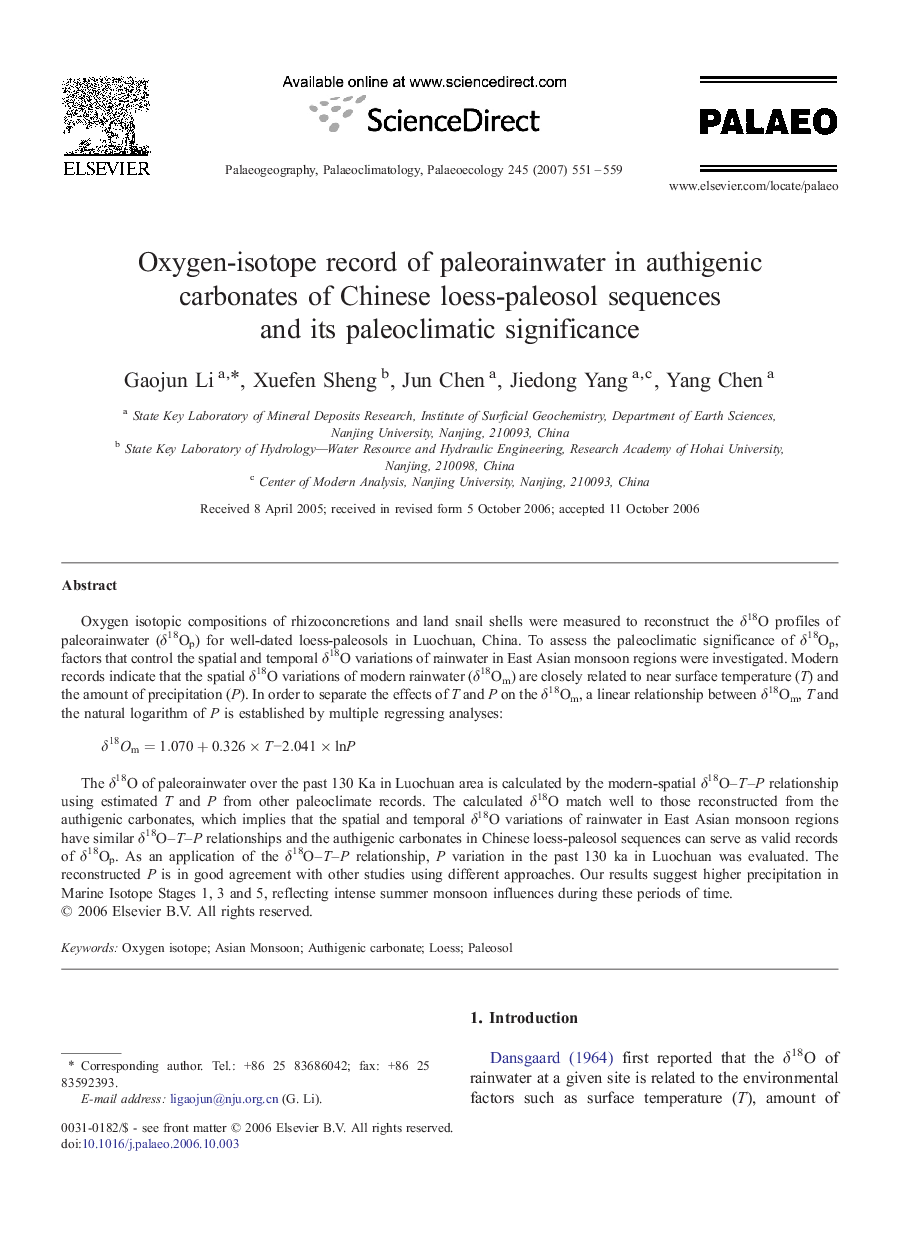| Article ID | Journal | Published Year | Pages | File Type |
|---|---|---|---|---|
| 4469066 | Palaeogeography, Palaeoclimatology, Palaeoecology | 2007 | 9 Pages |
Oxygen isotopic compositions of rhizoconcretions and land snail shells were measured to reconstruct the δ18O profiles of paleorainwater (δ18Op) for well-dated loess-paleosols in Luochuan, China. To assess the paleoclimatic significance of δ18Op, factors that control the spatial and temporal δ18O variations of rainwater in East Asian monsoon regions were investigated. Modern records indicate that the spatial δ18O variations of modern rainwater (δ18Om) are closely related to near surface temperature (T) and the amount of precipitation (P). In order to separate the effects of T and P on the δ18Om, a linear relationship between δ18Om, T and the natural logarithm of P is established by multiple regressing analyses:δ18Om=1.070+0.326×T−2.041×lnPδ18Om=1.070+0.326×T−2.041×lnPThe δ18O of paleorainwater over the past 130 Ka in Luochuan area is calculated by the modern-spatial δ18O–T–P relationship using estimated T and P from other paleoclimate records. The calculated δ18O match well to those reconstructed from the authigenic carbonates, which implies that the spatial and temporal δ18O variations of rainwater in East Asian monsoon regions have similar δ18O–T–P relationships and the authigenic carbonates in Chinese loess-paleosol sequences can serve as valid records of δ18Op. As an application of the δ18O–T–P relationship, P variation in the past 130 ka in Luochuan was evaluated. The reconstructed P is in good agreement with other studies using different approaches. Our results suggest higher precipitation in Marine Isotope Stages 1, 3 and 5, reflecting intense summer monsoon influences during these periods of time.
